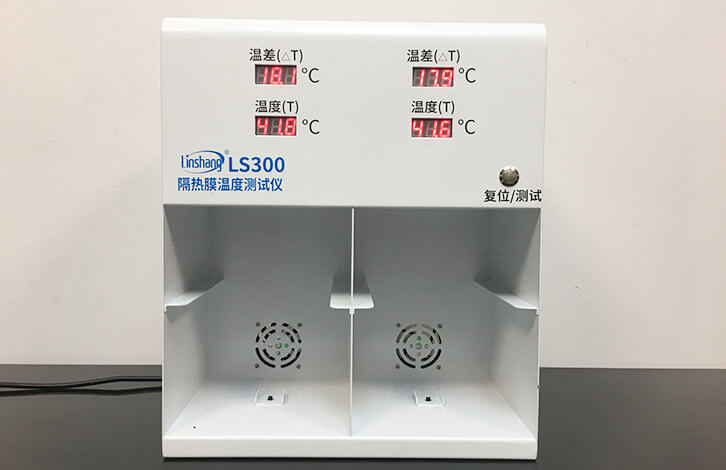Can We set the Test Time of the Solar Film Temperature Meter?
LS300 and LS301 are two thermal solar film temperature meters for demonstrating the thermal insulation performance of thermal insulation film, glass and other materials. Two infrared lamps are built in the box. The temperature in the box can be quickly raised after the lamp is turned on. Both solar film temperature meters are divided into two test spaces. After placing different test materials in different spaces, they can demonstrate the difference in thermal insulation performance through comparison.
The infrared light test time of the two solar film temperature meters is 1 minute and the infrared light will be automatically turned off after 1 minute after the light is turned on. Many customers react that the irradiation time is too short after use, hoping to set the test time by themselves. However, at present, these two products do not support the self-setting of the light duration. If necessary, you can send the instrument back to the manufacturer to customize other test durations of 10 minutes or 20 minutes. Or you can directly cancel the timing setting. But many users still have doubts, why the test time of the two solar film temperature meters is limited to 1 minute?
This is because the heat generated by the infrared lamp will cause the temperature to rise and the high temperature environment will cause damage to the built-in electronic components. After several tests in the research and development stage, we set the test time to 1 minute. If the lamp is illuminated for 1 minute without placing any thermal insulation material, the temperature can rise to more than 40 degrees. This temperature value is more suitable for the instrument itself and the demonstration results.
The customized solar film temperature meter due to its speciality, we will no longer provide 1 year warranty service. Reminder: If you cancel the 1-minute timer setting of the device, please turn off the infrared light in time after the light-on test is completed, so as not to cause adverse consequences.
- Classification and Identification of Solar Film | Window Tint Light Meter
- Why is there difference between the color displayed on colorimeter and the actual color?
- Application of LS182 Window Tint Detector in Lamp-Box Fabric Industry
- UV Integrators Used to Test UV Curing Oven Light Sources
- How to Choose A Right Window Tint Meter?
- Difference between LS182 and WP4500 Window Energy Profiler
